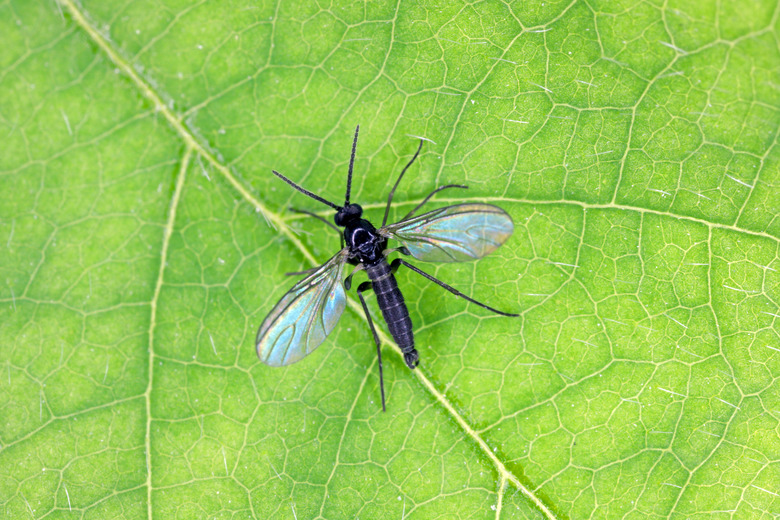How To Get Rid Of Gnats In My Potted Plants
Fungus gnats are small flying insects that lay their eggs in the growing medium of potted indoor plants, leading to an infestation. Proper plant care can help prevent fungus gnat infestations from occurring. When infestations do develop, it is often possible to get rid of gnats without using chemical pest control.
What Are Fungus Gnats?
Not to be confused with fruit flies, fungus gnats are tiny flies that are about 1/8 of an inch long. Infestations are thought to be more common in the fall and winter.
Female fungus gnats lay eggs—as many as 200 per gnat—on the soil surface of potted plants. The larvae that emerge from these eggs feed on fungi and organic matter in the soil that is decaying.
It takes about four weeks for adult fungus gnats to develop from the time the gnat eggs are laid. Adult fungus gnats do not bite, but they can be annoying in large numbers.
Adult fungus gnats do not bite.
Gnats in My Houseplants
While having a gnat problem in the home can be a nuisance, adult gnats do not cause any damage to plants. It's the larvae, or immature form of the insect, that can potentially feed on plants and cause damage, though the fungus gnat maggots need to be present in very large numbers for this to happen.
To determine if there are fungus gnat larvae present in the soil of your houseplants, slice up a potato and place the slices around the potting soil. If there are fungus gnat larvae in the soil, the maggots will make their way to the surface to feed on the potato slices.
Tip
While adult fungus gnats do not harm plants, in large numbers, the feeding of their larvae can result in injury to the roots or other plant parts.
How to Control Fungus Gnats
A gnat problem can usually be resolved without the use of harsh chemicals. Let's look at some ways to prevent fungus gnat infestations and how to get rid of gnats on plants.
Cultural Control
Overwatering is usually one of the primary causes of fungus gnat infestations. Therefore, providing only the amount of water your houseplants need to avoid overly damp soil can help keep these insects in check. Excessively moist soil should also be avoided because it can lead to root rot.
As a rule of thumb, you should water houseplants only when the top layer of soil, about an inch deep, is dry to the touch. Bottom watering is also an alternative for hydrating the plant roots while keeping the top of the soil dry.
Overwatering is usually one of the primary causes of fungus gnat infestations.
Yellow Sticky Traps
One way to get rid of gnats in plants is placing sticky gnat traps near the plants to trap the adults. Yellow sticky traps are available for purchase at many garden stores. Fly traps that ensnare adult fungus gnats can limit the number of females that survive to lay eggs and therefore reduce the infestation.
Biological Control
Fungus gnats can also be potentially controlled with products that contain the bacterium Bacillus thuringiensis subsp. israelensis (Bti), which won't kill adult fungus gnats or eggs, but can be added to the soil about once a week for several weeks to control the insects at the larval stage.
Steinernema feltiae, a species of microscopic, parasitic roundworms known as nematodes, can also be effective at controlling the larvae when applied to the soil.
